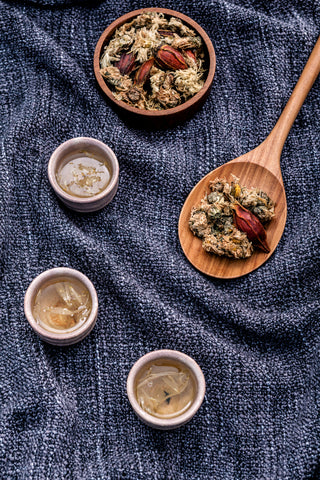8% off orders over $100, 15% off orders over $150, 20% off orders over $300.
Menu
-
- Specials
-
Types
-
Symbols
- Auspicious Cloud | Heaven
- Lotus | Purity & Elevation
- Phoenix | Rebirth and Fidelity
- The Nine | Eternity and Completeness
- Bamboo | Strength and Resilience
- Ruyi | Wish Fulfillment
- Moon | Mystery & Elegance
- Herbal Locket | Hidden Protection
- Tassel | Elegant Charm
- Butterfly and Flower | Love
- Plum Blossom | Endurance and Resilience
- Chinese Knot | Harmony, Tradition, Legacy
- Pumpkin | Prosperity & Abundance
- Pipa | Celestial Music
- Hulu Gourd | Protection and Prosperity
- Fish | Prosperity
-
Collections
- Atlantis
- Revive Your Inner Kingdom
- Auspicious Origin
- Auspicious Flower
- Udumbara Flower
- Return to Origin
- Celestial Cloud
- Elf Forest
- Gold Lotus
- Serene Lotus
- Pearl Elegance
- Radiance
- Metropolis Hermit
- The Nine
- Moon Goddess
- Tassel Elegance
- Chic Velvet Choker
- The Cloud
- Lotus Leaf
- Realm of Peace
- Four Season
-
Craftsmanship
-
Gemstones
- Pearl | Purity and Wisdom
- Jade | Stone of Heaven
- Turquoise | Protection and Healing
- Tridacna | Realm of Peace
- Lapis | Truth and Enlightenment
- Rose Quartz|Love, Healing, Compassion
- Amethyst | Clarity and Tranquility
- Amber | Vitality and Protection
- Carnelian | Courage and Vitality
- Coral | Protection and Prosperity
- Tourmaline | Energy and Balance
- Crystal | Healing and Clarity
-
Birthstone
-
Style
-
Price
-
- Jewelry Set
- Necklaces
- Earrings
- Bracelets
- Hair Jewelry
- Glasses Chains
- Rings
- Anklets
- Ornaments
- Login
-
English

8% off orders over $100, 15% off orders over $150, 20% off orders over $300.
Behind the Design: Chrysanthemum the Noble Flower
October 22, 2016 2 min read
The chrysanthemum, also known as the "Autumn Flower", is one of the four "honourable plants" in Chinese culture. The others are plum, orchid and bamboo, which are symbols of nobility.

'Autumn flower'
The chrysanthemum is like a hermit, which blooms in the cold days of late autumn and early winter, when other flowers have faded from the season. She represents nobility, and the elegance of people who preserve their morality under hardships, and refuse to be polluted by society. In the eyes of romantic Chinese scholars this combination of beauty and strong character makes the ideal personality.
One Counselor in the Three Kingdoms period describes chrysanthemum as having 5 kinds of nobilities: its golden blossoming is like heaven, its pure yellow color is like earth, its beauty shows in late season like the nobility of a gentleman, its strength against the cold season is like being faithful, and its medical properties make the body light and fresh like food for the divine.

The famous poet Qu Yuan (340-278 BC) was among the first to write poetry about the chrysanthemum. In his poem "Li Sao" he express how he wants to maintain a pure character: "Drink dew from the magnolia in the morning and take autumn chrysanthemum's falling petals as food in the evening."
If there is a scholar that is considered to be an ambassador for chrysanthemum, it must be the celebrated poet Tao Yuanming (365-427). His poem "Drinking Wine" was written after he had resigned from his high official post and was enjoying the countryside life without attachment to fame and status. It contains the line: “As modest and undisturbed as chrysanthemum” (人淡如菊), which has become a well-used compliment to people who hold these virtues and spiritual qualities.
In "The Dream of The Red Chamber", one of China's Four Great Classical Novels, the story has more than 10 poems about chrysanthemum.
The Chinese name for chrysanthemum "ju" means "gathering together", because the flower looks like a petal ball. In the joyful harvest season, it is so great for family members to gather together and enjoy the moon festival (a festival for bringing family together), accompanied by chrysanthemum’s beauty.
Health properties of chrysanthemum
To the common people, chrysanthemum was also used as a herb. You still find today that Chinese women drink chrysanthemum tea instead of coffee. One variety of chrysanthemum, known as "Hang Bai Ju" (Hangzhou White Chrysanthemum), is said by experts to have healthcare properties.

Ancient people believed that this flower, which was able to endure very cold weather, must have attracted "the soul of the sky and the earth" - certainly a health benefit.
A book from the time of the Han Dynasty (206-220 BC) said there used to be a village named Gangu in Central China's Henan Province where people drank from a nearby stream that contained the petals of chrysanthemums. The petals had fallen into the stream up in the mountains and all the villagers lived to a great age, some as long as 130 years.
The well-known doctor, Tao Hongjing, also encouraged people to eat chrysanthemum petals. He said that good-quality chrysanthemums taste a little sweet, while the bad ones taste a little bitter. So why not try some chrysanthemums this autumn?
Edited by James Poulter
Subscribe
Sign up to get the latest on sales, new releases and more …

